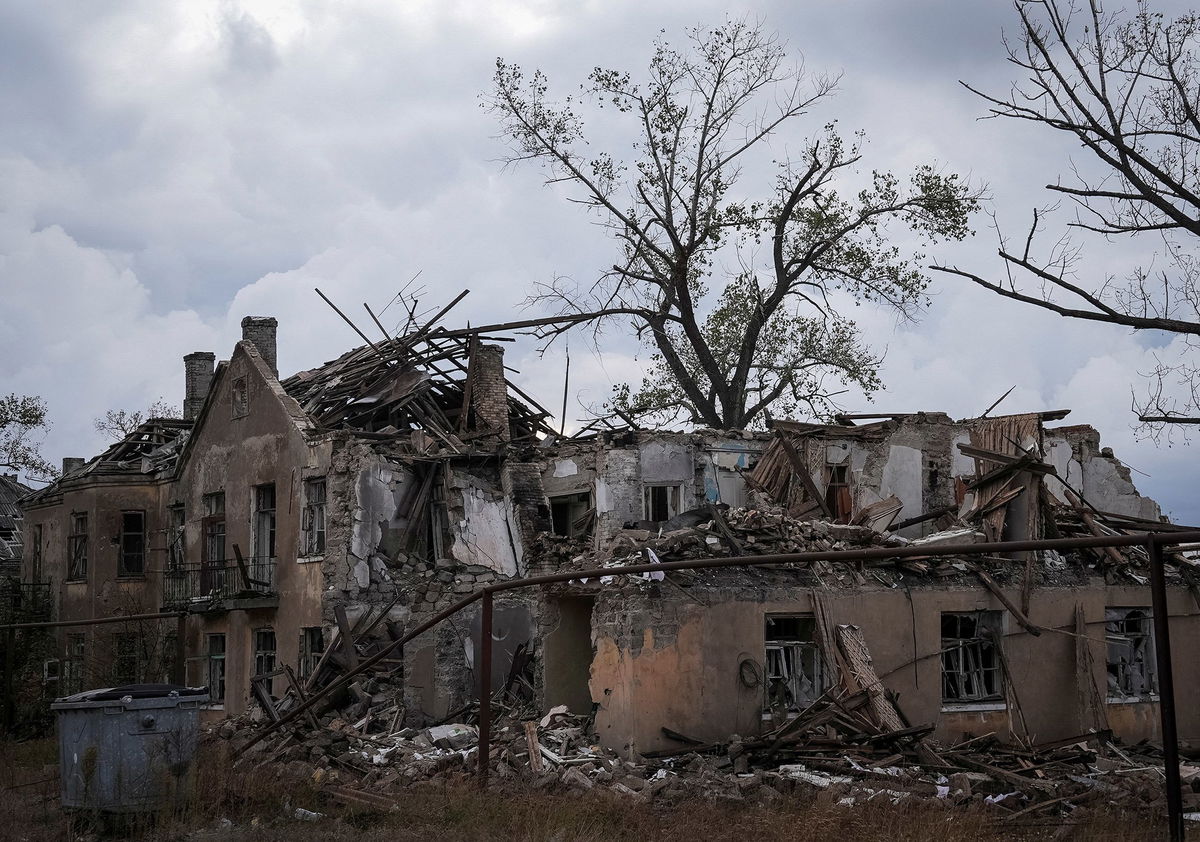US and G7 allies moving forward with $50 billion loan package to Ukraine, including $20 billion from the US backed by frozen Russian assets

A view of a damaged residential building in the front line city of Chasiv Yar in Donetsk region
By Sam Fossum, CNN
(CNN) — The US and Western allies are moving forward with a $50 billion loan package to Ukraine backed by the profits of frozen Russian assets, which includes a US contribution of $20 billion, the White House announced Wednesday.
“As part of the G7 package, the United States is announcing today that we will provide $20 billion in loans to Ukraine that will be paid back by the interest earned from immobilized Russian sovereign assets,” President Joe Biden said in a statement formally announcing the package. “In other words, Ukraine can receive the assistance it needs now, without burdening taxpayers.”
The president described the loans as supporting Ukrainians “as they defend and rebuild their country.”
“And our efforts make it clear,” Biden added, “tyrants will be responsible for the damages they cause.”
Biden administration officials view the aid as vital for Kyiv’s war-torn economy heading into the winter months.
“Ukraine will receive the assistance it needs now, without burdening our taxpayers,” said White House deputy national security advisor for international economics Daleep Singh.
The announcement comes during a fraught political period in the US, which is less than two weeks away from a presidential election that could return Republican candidate Donald Trump, who has been a public skeptic of US aid to Ukraine, to the White House.
The US will disperse at least half of its $20 billion loan by this December, according to Singh. The administration plans to use half of the loan for economic assistance and the second half for additional military aid to Kyiv. But the White House will need to secure further authority from Congress to provide parts of the loan as military support.
If the White House cannot reach an agreement with the legislative branch securing the requisite authorities, Singh said that the administration would pivot and instead provide the full loan amount as economic aid.
“We’re going to provide $20 billion either way. But we’ll work with Congress over the next few months to assess whether we can get sufficient authority through foreign military financing, loan guarantee authorities to provide half of our assistance through military support,” Singh said.
The other $30 billion in aid will come from the European Union and fellow G7 partners, including the United Kingdom, Canada and Japan.
“As we committed in June, the G7 will begin dispersing assistance for the benefit of Ukraine by the end of this year, so that we can meet Ukraine’s urgent needs as we approach the winter while sending an unmistakable signal, the United States and its G7 partners will not fatigue,” Singh said.
The US-led campaign to reach an agreement between the other G7 nations — the UK, Canada, France, Germany, Italy and Japan — was announced at the group’s summit in Puglia, Italy, earlier this year.
In the ensuing months, the US and its allies have ironed out the finer details of executing the complex loan. European lawmakers on Tuesday approved a loan of up roughly $37.7 billion (35 billion euros) for Ukraine backed by the frozen Russian assets.
Further details will be announced following the forthcoming G7 finance ministers meeting, he added.
Western nations froze Russia’s assets in bank accounts located within Europe and the US as part of a massive wave of sanctions enacted after Russian President Vladimir Putin ordered the invasion of Ukraine in 2022. Hundreds of billions of assets are frozen in Europe, with just a small amount – roughly $3 billion – located in banks in the US.
This originally led European officials to raise concerns they could be on the hook if Ukraine failed to pay back the loan, but negotiators have ultimately structured the deal so all countries participating share the risk.
Should a peace agreement be reached in the conflict, either the Russian assets will stay frozen and generate interest to repay the loans until they’re repaid, or Russia will pay for the damage it has caused.
G7 countries first started thinking of other long-term sources of funding for Ukraine late last year amid doubts on the future political and financial commitment to continue spending taxpayer money in Ukraine.
CNN’s Kayla Tausche, Arlette Saenz and Nikki Carvajal contributed to this report.
The-CNN-Wire
™ & © 2024 Cable News Network, Inc., a Warner Bros. Discovery Company. All rights reserved.